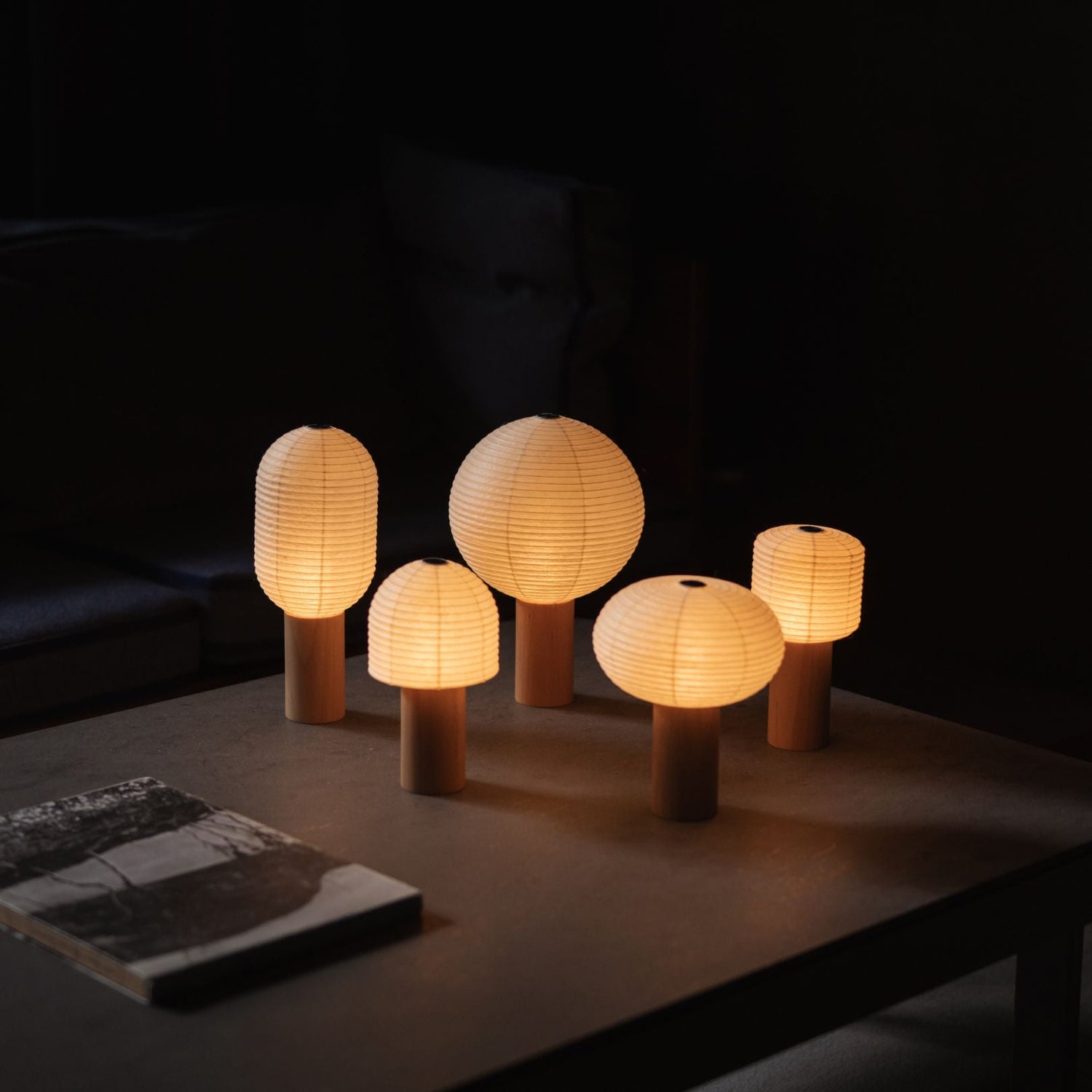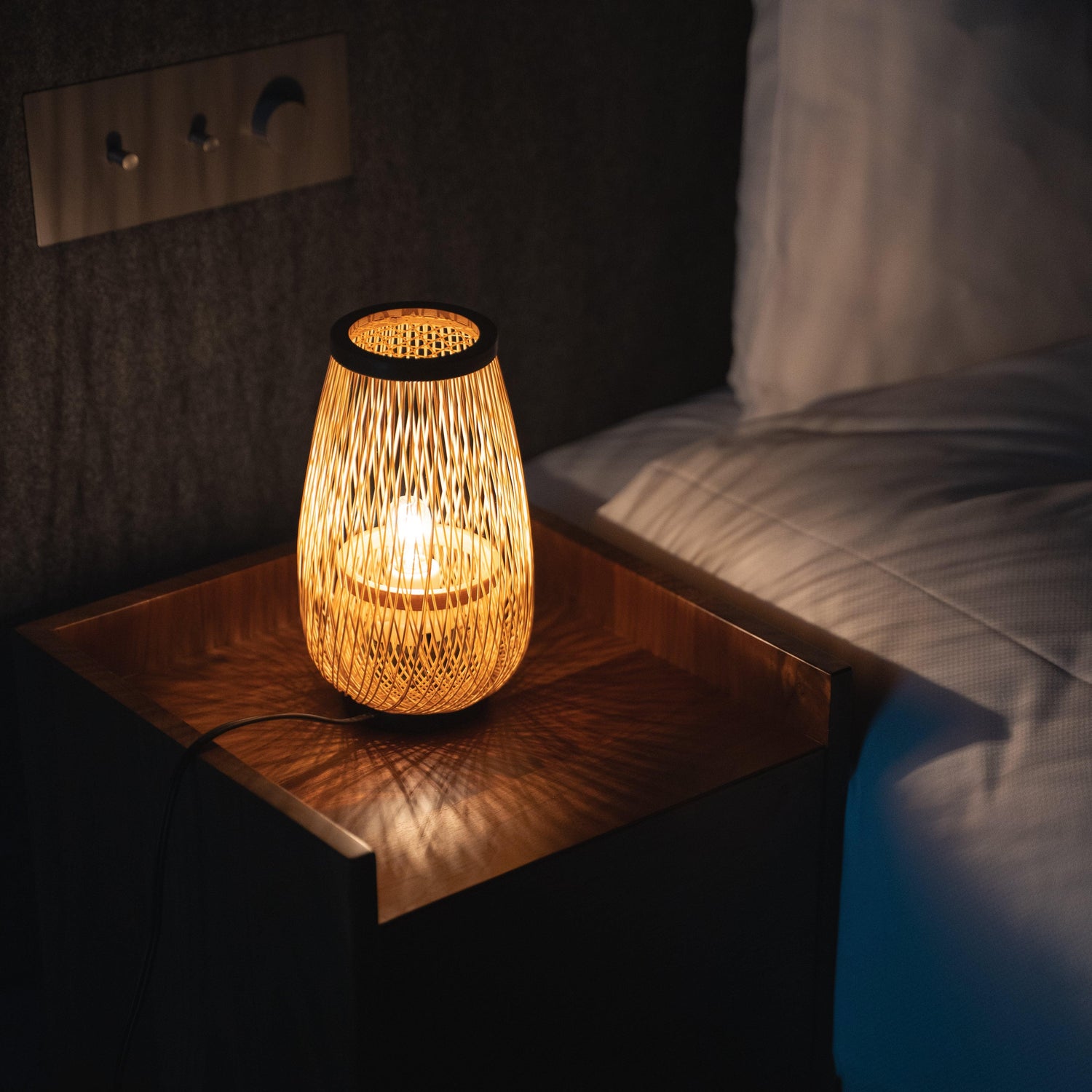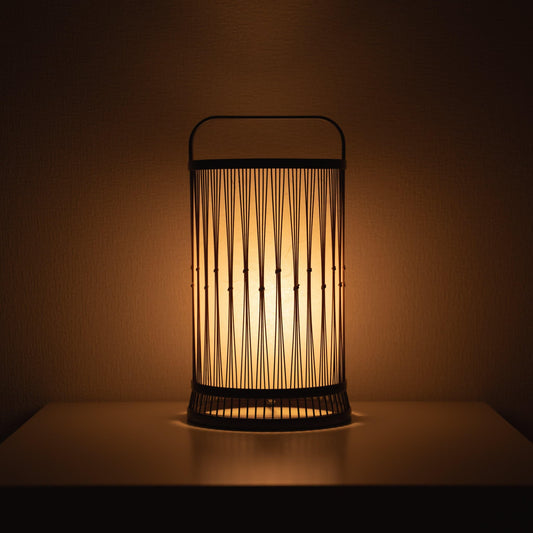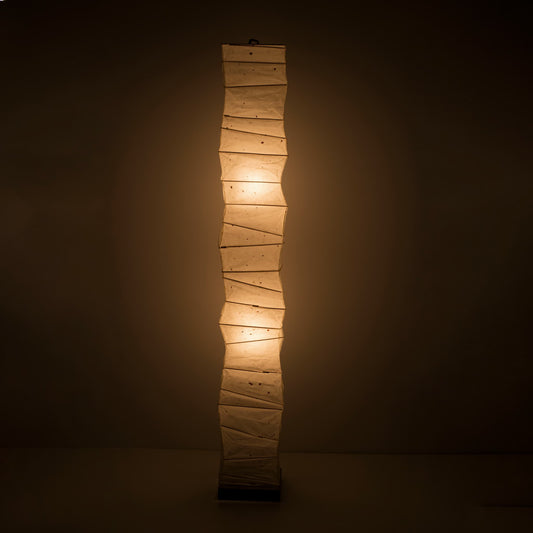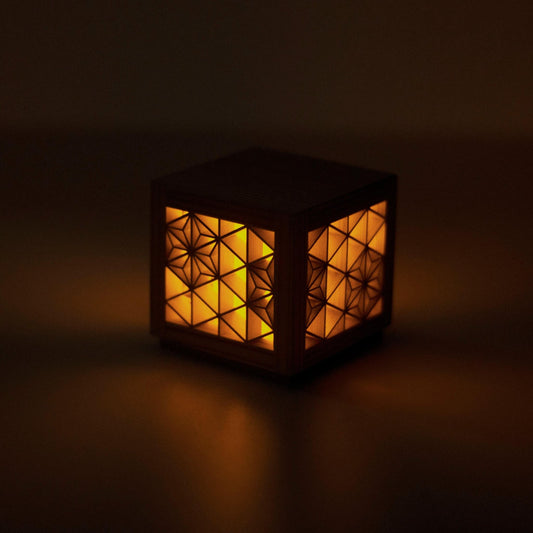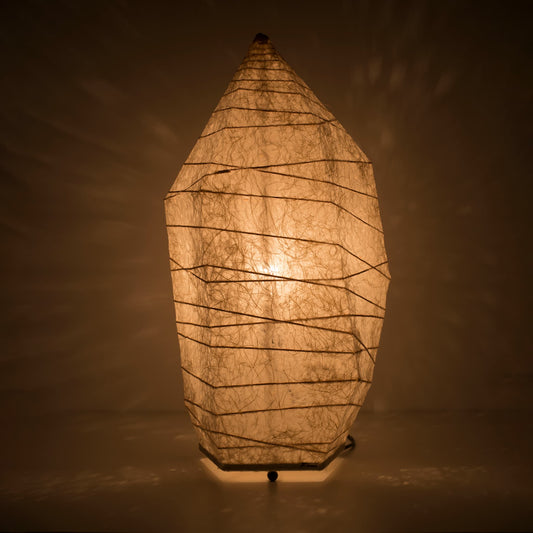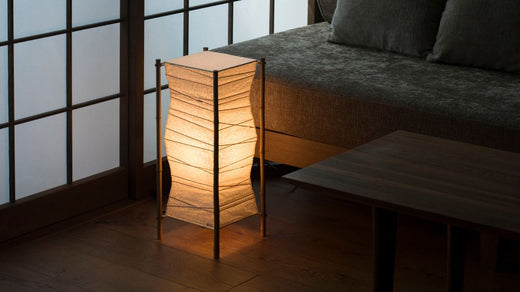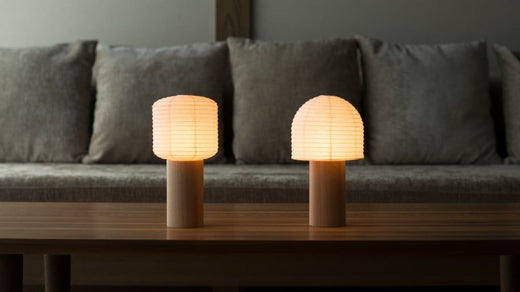
Japanese Lanterns: A Guide to History, Types & 5 Best Picks
Share
The gentle glow of a Japanese lantern does more than just light up a room—it creates an atmosphere of tranquility and timeless artistry. In this guide, we'll cover the fascinating history behind these traditional light fixtures and look at the different styles you can find. To make your search easier, we’ve also selected five beautiful Japanese lanterns perfect for bringing that serene aesthetic into your own home.
Table of contents
The Illuminating History of Japanese Lanterns
The history of lighting in Japan can be traced back to the development of fuel sources.The first oil lamps were used in Japan around 1300 years ago during the Nara period (710-794 AD). They were introduced from China along with Buddhism, used animal oil as fuel, and were lit using a simple tool called a "Todai(oil lamp)".
The "Todai" consisted of a "Hizara" (oil dish) filled with oil and a "Toshin" (wick) made from plant stems that was dipped in the oil and lit. At the same time, "Ishi-Toro" (stone lanterns) were introduced as a form of Buddhist architectural lighting. As these were lighting fixtures used for religious ceremonies, only monks and high-ranking individuals had the opportunity to use them.
From the Heian period (794-1185 AD) to the Azuchi-Momoyama period (1568-1600 AD), plant-based oils and the prototypes of Andon(paper-covered lamps) and Chochin(paper lanterns) were introduced from China. During this time, stone lanterns, which had previously been used only for religious ceremonies, began to be used as city lights, illuminating guard posts for samurai responsible for maintaining order in the city. However, oil and candles were still very valuable, and ordinary people rarely had the opportunity to use them.
The Edo period (1603-1868 AD), a time of peace that lasted for 260 years, saw significant development in Japanese lighting culture. Various new lighting fixtures became widespread, and people's lives were enriched by light. Stone lanterns became common as streetlights, and new types of lighting such as andon(paper-covered lamps) and chochin(paper lanterns) were installed in front of shops.
The spread of fuel was also related to the development of these lighting fixtures. While still valuable and expensive, fuels such as oil and candles became more accessible to the general public. The andon, which developed as a stationary lighting fixture, was created by enclosing the previously exposed "Todai" with a "Hibukuro" (paper shade) for wind protection. This shade was made of Japanese paper, which was widely used at the time. Also, with the introduction of plant-based candle materials, dedicated candle lighting fixtures were created. These were the chochin(paper lanterns).
During the Edo period, when travel became popular, Toro(stone lanterns) were widely installed to prevent travelers from getting lost, chochin were used as portable lights, and andon were used to indicate lodgings and restaurants.These lighting fixtures were used in Japan until gas lamps were introduced in the Meiji era (1868-1912 AD), followed by the widespread use of electric lighting.
Chochin (Japanese Paper Lantern)
The Chochin is one of the most iconic types of Japanese lantern. It is characterized by its functional design, featuring washi paper stretched over a bamboo frame that can be collapsed for portability. The warm light from these lanterns, which adorns festivals and storefronts, continues to be beloved by many today as a symbol of the Japanese landscape.
Chochin: The Iconic Japanese Paper Lantern
Chochin(Japanese Paper Lantern) were created in Japan during the Edo period, about 400 years ago. They use a candle as an internal light source, and the light shines through a "Hibukuro" (shade) made of materials such as Japanese paper to illuminate the surroundings. The Chinese character "提" in “提灯(chochin)” means "to carry in the hand," and "灯" means light. With the added functionality of being foldable, which was not present in the original Chinese lanterns, chochin became popular during the Edo period when travel was in vogue.
Later, various shapes of chochin were created to suit different purposes, not just for carrying by hand, and they are still used today in Japan for the exteriors of shrines, restaurants, and other places. A typical example is the lantern at Kaminarimon Gate of Senso-ji Temple in Asakusa, Tokyo. It is a giant red lantern with the characters "雷門" (Kaminarimon) written in large letters.
Another example is "Akari," a lighting sculpture created by the artist Isamu Noguchi, which was inspired by Gifu chochin. Gifu chochin are traditional crafts made using Mino Japanese paper with a history of over 1300 years and high-quality bamboo. They are characterized by the soft and warm light of handmade Japanese paper.Even today, chochin continue to illuminate the lives of Japanese people.
Structure of Chochin
Chochin are mainly composed of three parts: "Hibukuro" (shade), "Gawa" (rings), and "Hone" (ribs).
-
Hibukuro (shade): The shade is made of Japanese paper and serves as a windbreak. The color of the Japanese paper used varies depending on the type of chochin. There are also various designs, including those with crests and letters, and those with paintings of flowers and landscapes. Chochin hung in front of shrines and shops in modern Japan often have the names of the shrines or shops written on them, while those displayed at summer festivals often have cool and refreshing pictures.
-
Gawa(rings): These are the rings at the top and bottom of the chochin. Foldable chochin are extended and contracted by holding this part.
- Hone(ribs): These are the frames that shape the chochin. Traditional materials include "Takehigo," which are thin strips of bamboo that have been split and shaved. There are two main methods for winding the ribs: the Gifu chochin method, where each rib is wound individually around a ring-shaped rib, and the "Ichijo Rasen-shiki" method used for Yame chochin in Fukuoka Prefecture, where a single long rib is wound in a spiral.
Toro (Japanese Stone Lantern)
The Toro is a type of Japanese lantern originally created for light offerings at temples and shrines. Often crafted from stone, they bring a serene and stately atmosphere to gardens and sacred sites. Weathering the elements, their enduring form is more than just illumination; it is a sculptural presence that adds a sense of tranquility and dignity to any space.
Exploring the Significance of Toro Lanterns
Toro (Japanese Stone Lantern) were lights used in Buddhist architecture and have the oldest history among lighting fixtures introduced to Japan from China. In Buddhism, where light was believed to ward off evil spirits, there was a custom of lighting lamps in front of Buddha statues, which has been passed down to the present day. In Japan, stone lanterns became widespread during the Edo period and were installed as streetlights and guideposts for travelers.
The Chinese character "籠" in “灯籠(toro)” means "basket," so toro means a basket that holds light. There are three types of toro depending on the material: stone lanterns, paper lanterns, and bamboo lanterns. Ishi-toro(Stone lanterns) have the oldest history and are still used today as outdoor lanterns in temples, shrines, Japanese gardens, and graves. Kami-toro(Paper lanterns) made of Japanese paper are used in events such as Toro Nagashi (lantern floating ceremony), a custom of commemorating the dead. Take-toro(Bamboo lanterns) are made of bamboo.
Among the three types, stone lanterns are the most common and are often seen in Japanese gardens, so many people use small stone lanterns in their home gardens.
Structure of Toro
First, let's look at the structure of a Ishi-toro(stone lantern). It consists of the following six parts:
- Hoju: The onion-shaped stone at the very top.
- Kasa: The roof of the firebox. The shape varies from polygonal to circular.
- Hibukuro: The part where the light is lit. Sometimes Japanese paper is pasted on it as a windbreak.
- Uke: The base that supports the firebox, often in a shape contrasting with the base.
- Hashira: The longest pillar part, which may be omitted in some types.
- Jirin: The base at the bottom. It is a polygonal or circular base, and some types have multiple leg-shaped forms.
Kami-toro(paper lanterns) and Take-toro(bamboo lanterns) do not have a fixed shape and have a relatively simpler structure than stone lanterns. Paper lanterns are often square-shaped with Japanese paper surrounding the light source, and it is common to use a wooden board at the bottom to place the light source. Bamboo lanterns are generally made by hollowing out the side of a bamboo tube, drawing a pattern on it, and placing the light source on the node.
Andon (Paper-Covered Lamp)
The Andon is an indoor Japanese lighting fixture, the traditional equivalent of a modern floor or table lamp. Unlike the portable Chochin, the Andon was designed to be stationary, placed in a room's corner or at one's bedside. The soft light filtering through its wooden frame and washi paper gently illuminated people’s nightly activities, adding a calm and colorful ambiance to the space.
Andon: Origins and Unique Features
The Andon (Paper-Covered Lamp) is a lighting fixture that uses oil or candles as fuel, created during the Edo period. It was developed by adding a wooden frame and Japanese paper enclosure to the previously exposed "Todai" (oil lamp) to protect the flame from the wind when carrying it. The Chinese character "行" in “行灯(andon)” means "to move," and although it was originally portable, its role as a portable light source was later replaced by the more popular chochin (paper lantern). Andon came to be used primarily as stationary lighting, becoming the equivalent of modern floor lamps and table lamps.
Various types of andon were created for different purposes. Some typical examples include the most common indoor "Oki-andon" (placed andon), the "Kake-andon" (hanging andon) hung on the eaves of shops with the shop name or product name written on it as a signboard, and the "Ariake-andon," a small andon with a window that could be adjusted to control the amount of light, used as a bedside lamp.
Since andon are made of Japanese paper and wood, they were mainly developed as indoor lighting. However, they also fell out of use after the advent of gas lamps and electric lighting. Today, they are generally used in temples and traditional Japanese houses, such as those found in Kyoto.
Structure of Andon
The structure of the andon(Paper-Covered Lamp) is simple, but its decoration varies widely.The most basic structure consists of a "Hizara" (oil dish) for holding oil or candles, with a frame made of wood and Japanese paper placed over it.
The hanging type "Kake-andon" has an oil dish placed on a base attached to a pillar or wall, with a wind-protecting frame hung over it. Some have a wooden roof on top or wooden decorations on the sides.
The "Ariake-andon" shows the ingenuity and playfulness of the people of the Edo period. It has a wooden cover with a window that can be placed over a regular andon to adjust the amount of light. When the cover is removed, it also serves as a base, allowing the height of the lamp to be adjusted. The shape of the window can be circular, moon-shaped, diamond-shaped, etc., expanding the variety of interior design possibilities.
Bring the Beauty of Japanese Lanterns Home
The enduring appeal of the Japanese lantern lies in its ability to evolve. Traditional craftsmanship continues to be adapted for contemporary living, resulting in lighting that feels both timeless and fresh. A single lantern can serve as a sculptural focal point, casting a soft glow that shifts the mood of a room and adds a quiet, artistic touch.
This modern spirit is perfectly captured in Isamu Noguchi's iconic "Akari" light sculptures, famously inspired by Gifu chochin. It's also why Japanese lanterns are a natural fit for the popular Japandi interior style. Their use of organic materials like washi paper and wood, paired with a gentle, diffused light, helps create the exact minimalist-yet-warm aesthetic that defines the trend.
The versatility extends from classic stone lanterns (Toro) for your garden to delicate paper lamps for inside. To help you navigate the choices, we’ve highlighted five standout Japanese lanterns that skillfully balance heritage with modern design.
Our Top 5 Picks for Japanese Lanterns
Continuing a legacy of traditional Japanese beauty, these lanterns gently illuminate modern living. Here, our experts have carefully selected five modern masterpieces that also shine as interior décor. Discover the perfect, special light for your space.
Japanese Kumiko Lantern "Asanoha"
This Japanese lantern features the "Asanoha" (hemp leaf) pattern, a traditional symbol of protection and growth, crafted using the Japanese woodworking technique of kumiko. Artisans meticulously assemble this piece by hand, like a traditional andon lamp, using Akita cedar—Japan's finest wood—without a single nail. The contrast of soft light and shadow filtering through the traditional geometric patterns brings a serene, Japanese atmosphere to any room.
Japanese Paper Floor Lamp "BEANS LIGHT"
From Gifu, Japan, a major center for lantern production, these Japanese lanterns are crafted with luxurious Mino washi paper, a craft with 1,300 years of history. Each lamp is handmade by artisans using traditional techniques that also influenced Isamu Noguchi's "Akari" lights. The warm light that filters through its gentle, bean-like curves brings a sense of tranquility and refined ambiance to a space. It is a modern Japanese paper lantern perfect for enhancing a living room or bedroom.
Japanese Bamboo Floor Lamp "Moonlight"
This andon-style lantern is created by the sole female artisan carrying on the 800-year-old tradition of Suruga Take Sensuji Zaiku (Suruga Bamboo Lattice Work) in Shizuoka. She intricately weaves bamboo strips, each just 1mm wide, to form its structure. The light that filters through the washi paper is worthy of the name "Moonlight," offering a quiet and gentle glow. This rare Japanese lantern will bring a dignified elegance and a sense of calm to your living room or bedroom, filling the space with a Japanese mood.
Japanese Paper Table Lamp “TORCHIN OVAL"
A new style of Japanese lantern born from the techniques of Yame Chochin, a traditional craft from Fukuoka, Japan, with a history spanning approximately 200 years. While retaining the warm glow characteristic of washi paper lanterns, this lamp is cordless and portable, and features a three-level touch dimmer. Effortlessly bring the light of tradition to any spot you desire, from the living room to your bedside. This is a functional and beautiful Japanese paper lantern that seamlessly blends into modern life.
Japanese Beech Table Lamp "Matsuri" Chochin 01
Inspired by matsuri chochin (Japanese festival lanterns), this table lamp is crafted from beechwood grown in Aomori, Japan. It is transformed into a one-of-a-kind lighting fixture using the innovative "BUNACO" method, where wood once difficult to utilize is processed into tape-like strips and coiled. The light, filtering through the thinly shaved wood, carries a reddish tint reminiscent of a bonfire, creating a deeply calming atmosphere. It is a Japanese lantern that reinterprets the traditional chochin form in a different material.
Where to Buy Authentic Japanese Lanterns Online
Finding an authentic Japanese lantern online can be a challenge. To help you, we’ve curated a list of trusted stores where you can find high-quality, beautiful pieces, from modern designs to timeless traditional crafts.
Millennium Gallery Japan
Best for: Modern paper lamps and artistic wooden lanterns.
This specialty store is an excellent place to find high-quality Japanese lighting from expert artisans. It’s the perfect spot to search for contemporary paper lanterns similar to the 'BEANS LIGHT' and wooden masterpieces like the 'Kumiko Lantern' featured in our top picks. They also ship internationally.
Ishimo
Best for: Traditional, high-grade stone lanterns (Ishi-Toro).
For those seeking a truly authentic stone lantern to grace a garden or entryway, this Kyoto-based stonemason with over 290 years of history is an unparalleled choice. It represents an investment in timeless, enduring craftsmanship.
Etsy – Japanese Artisans
Best for: Unique, one-of-a-kind handmade lanterns.
To discover a piece with a personal touch, we recommend exploring the work of Japanese artisans on Etsy. You can find a vast range of creative styles and price points, and often communicate directly with the makers to find a truly special Japanese lantern.
From their rich history to their role in contemporary design, Japanese lanterns offer a unique blend of function and artistry. Each one provides a soft, warm light while adding a tangible sense of calm and heritage to a room. We hope our selections have helped you find the right lantern to bring this beautiful tradition into your home.


































